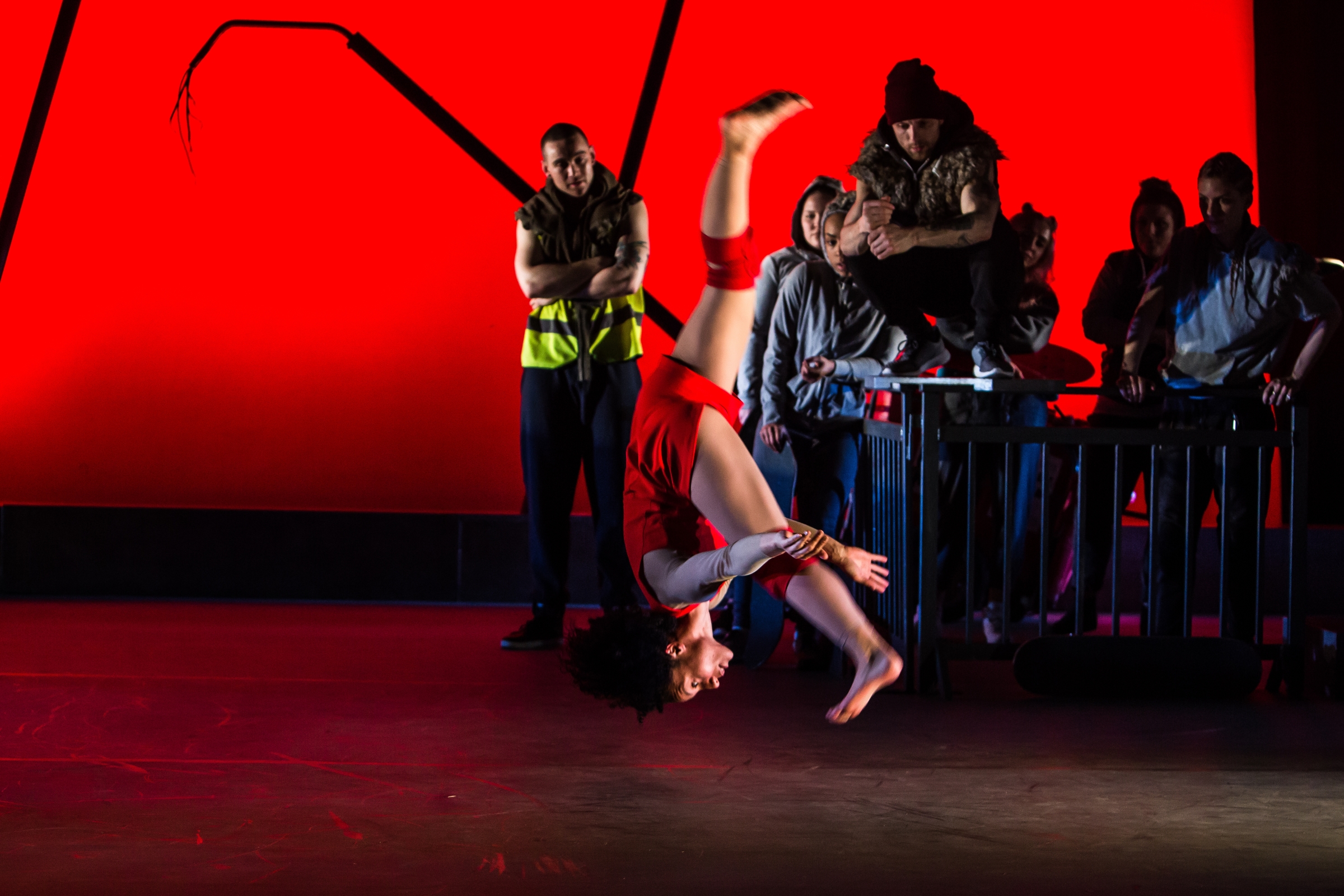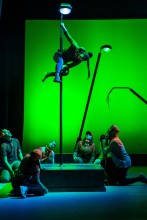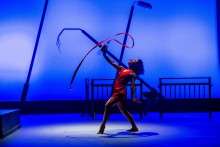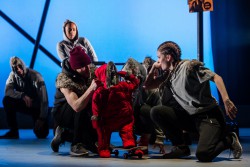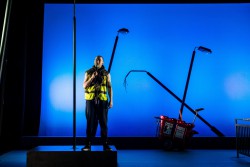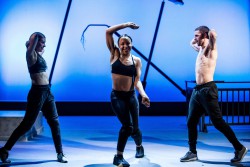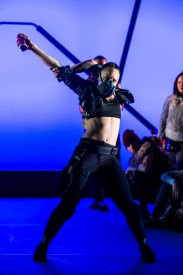When we founded our company Metta Theatre 13 years ago there were three driving principles, which satisfyingly remain the driving principles of the organisation to date. We wanted to provide a platform for unheard voices and stories, we wanted to pose political questions or provocations to our audiences, and we wanted to embody a spirit of collaboration in the way we make work. Our contemporary opera ROLES, written by myself and composer Oliver Brignall over the course of our six month artist residency at the V&A, exemplifies these principles perhaps more than any other Metta project to date.
Everything we do is politically provocative and we’re keenly motivated by the need to represent diversity in our work, but it’s the depth of artistic collaboration on this project that has been so profound and so transformative for our creative process. Never have I worked on a project, either for Metta or freelance, where every artist - whether writer, performer or even costume designer - has felt so integral to the creation of the work. Aptly for an explicitly feminist piece exploring female voice, the all-female cast and predominantly female creative team have had their voices not only heard but incorporated into the material. Because we commissioned the five costume designers as we were still writing the opera itself, and several began their design process before the libretto had been written, there are even sections of text written in response to design. Jean Chan’s extraordinary bloodied orb of a dress for Salome encouraged my exploration of moon and colour symbolism, meanwhile Gabriella Slade’s desire to explore pleating in Ottavia’s ‘power’ dressing directly inspired the line ‘waves fold and unfold, stories told and untold’ - her pleats playing out an infinite pattern, like the sea itself. So too the singers, who came with their individual interpretations of Oliver’s deliciously open graphic score, and several times (testament to his generosity and lack of ego in the writing process) made alternative suggestions which were then accepted, integrated and became part of the written score.
Consequently this piece ROLES - despite the intentionally clashing aesthetics of the five costumes - has a deep coherence to it that I have rarely encountered - everyone is wholeheartedly singing from the same hymn sheet, and consequently the layers and richness in the work are magnified. The unusual process of creation, working piecemeal and iteratively throughout our V&A residency, aria by aria, designers creating alongside the opera being written - is undoubtedly a factor in this. But I wonder too whether the feminist agenda of the project has not also galvanised our team of 17 artists (15 of them female). Opera as an artform is almost categorised by its ‘important’ roles for women - but it’s also true that historically all of those roles were created by men (albeit sometimes hugely progressive enlightened men, like Mozart) and sit has striking how often those roles require women either to die (Katerina and Salome) or to make huge sacrifices and end in tragedy (Ottavia and Bess).
It feels a powerful time to be challenging historically problematic representations of women and to refashion and reimagine these roles for today. Many women, especially young women, are finding their voices - speaking up and speaking out against the ongoing feminist struggles of inequalities of pay, everyday sexism and of course sexual harassment (when the characters sing ‘Me Too’ they are not only singing about macaroons). But we would do well to remember the other women, still denied a voice - whether through repressive patriarchal regimes, or because the threat of violence in their lives makes silence feel a safer choice. This work is dedicated to them.








 bility and they may end up feeling like a burden. From the first day here at Metta, I have been welcomed with open arms and handed responsibilities as if they trusted me simply by the smile and eager look on my face. I have been doing tasks that range from emailing theatre contacts in regards to our tour of Jungle Book to analyzing sales reports, knitting and hand sewing props for our upcoming production of Blown Away, to interviewing audience members in Oxford after finally seeing Jungle Book for the first time.
Now that I have finally seen Jungle Book and processed all my emotions and thoughts on it, I must say that it is an incredible spectacle of dance and unlike any production I have seen in my life. I never knew the depth of attention that is required to keep a theatre company running, let alone thriving. Knowing how much goes into helping this production tour across England and Ireland, I have so much more respect for the administrative work that Anthea, Poppy, and Will tirelessly powered through to make this tour run as smoothly as possible. Despite the small imp
act that I had on Jungle Book, every bit that I can pitch in and help out with is met with enthusiasm and appreciativeness from the entire team. At times, it can feel a bit like I have been asked to paint a Fresco after having one introductory painting class, but with every stroke of my brush, I feel more confident and I can see the impact of my hard work; that has made an incredible difference in me.
bility and they may end up feeling like a burden. From the first day here at Metta, I have been welcomed with open arms and handed responsibilities as if they trusted me simply by the smile and eager look on my face. I have been doing tasks that range from emailing theatre contacts in regards to our tour of Jungle Book to analyzing sales reports, knitting and hand sewing props for our upcoming production of Blown Away, to interviewing audience members in Oxford after finally seeing Jungle Book for the first time.
Now that I have finally seen Jungle Book and processed all my emotions and thoughts on it, I must say that it is an incredible spectacle of dance and unlike any production I have seen in my life. I never knew the depth of attention that is required to keep a theatre company running, let alone thriving. Knowing how much goes into helping this production tour across England and Ireland, I have so much more respect for the administrative work that Anthea, Poppy, and Will tirelessly powered through to make this tour run as smoothly as possible. Despite the small imp
act that I had on Jungle Book, every bit that I can pitch in and help out with is met with enthusiasm and appreciativeness from the entire team. At times, it can feel a bit like I have been asked to paint a Fresco after having one introductory painting class, but with every stroke of my brush, I feel more confident and I can see the impact of my hard work; that has made an incredible difference in me. that I am more than just a silly twenty-something who majored in theatre and has limited job prospects when I enter the real world. This internship and my theatre education has taught me that I can handle anything thrown at me and the skills I have obtained during my education will allow me to go anywhere and do anything if I set my mind to it. I may just need to trust the guidance of a few painting masters along the way.
that I am more than just a silly twenty-something who majored in theatre and has limited job prospects when I enter the real world. This internship and my theatre education has taught me that I can handle anything thrown at me and the skills I have obtained during my education will allow me to go anywhere and do anything if I set my mind to it. I may just need to trust the guidance of a few painting masters along the way.